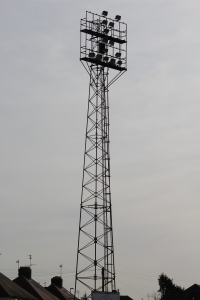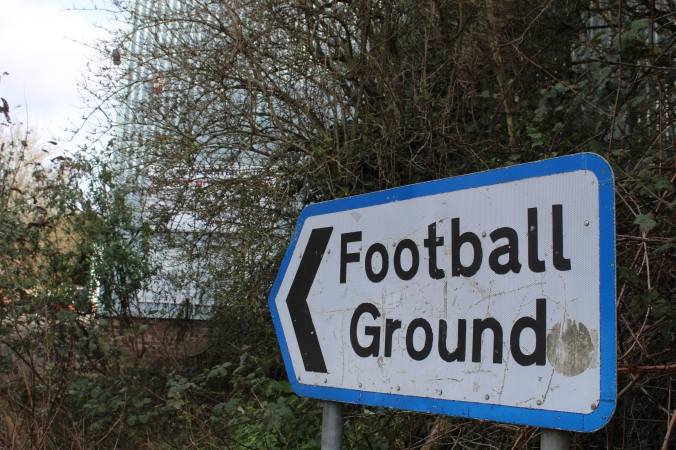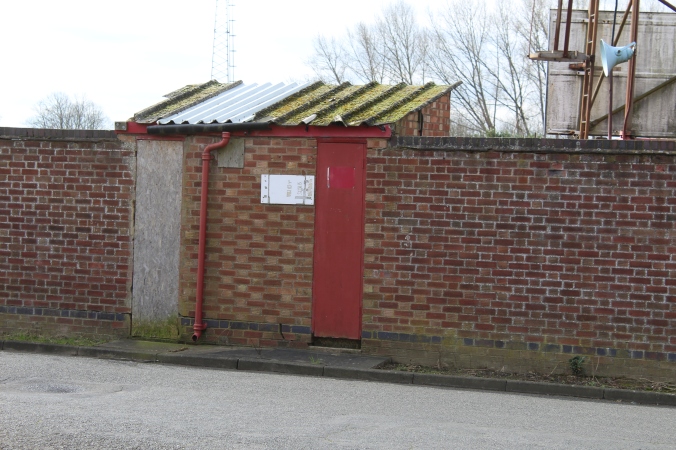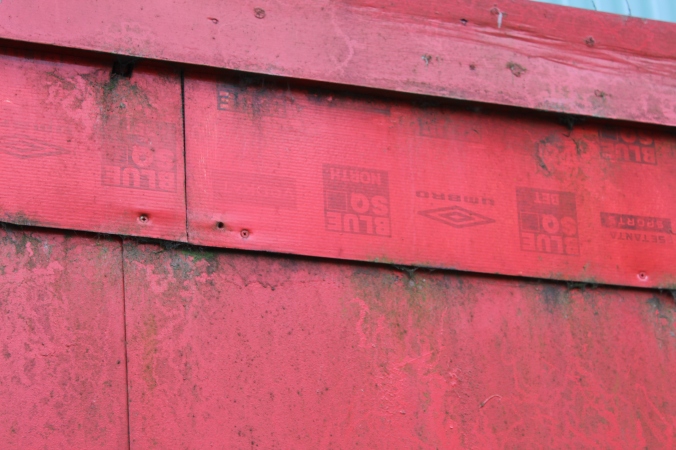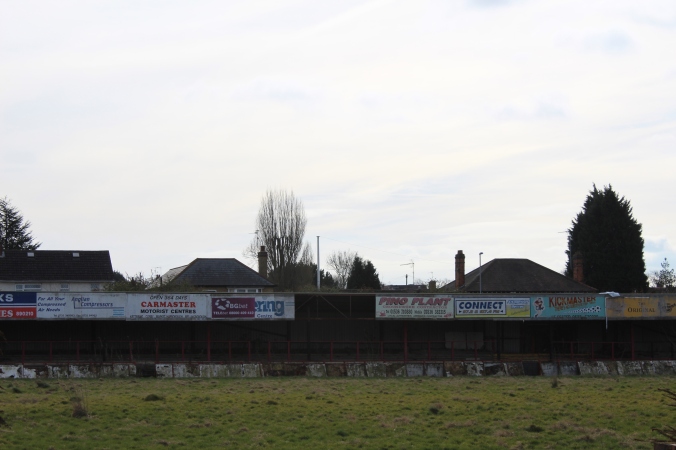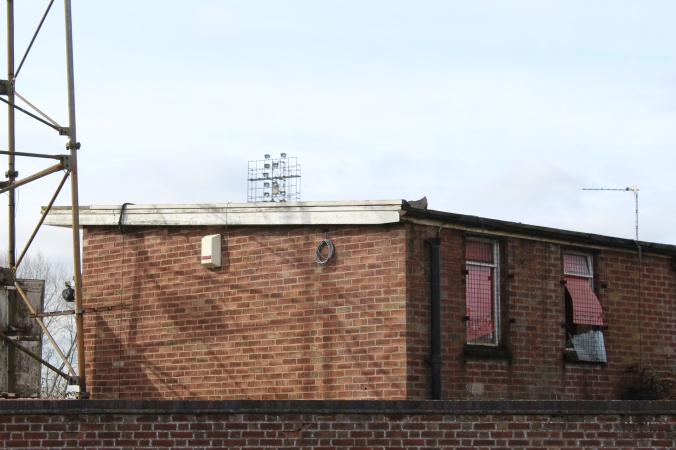When French journalist Gabriel Hanot dreamed up the idea of a competition to determine the best football team in Europe, he probably harboured lofty notions that the tournament would be a Corinthian festival of sport, bringing the continent together in a post-war spirit of cross-border friendship and understanding. If he managed to get along to any of the three matches between Rangers and his fellow countrymen OGC Nice in 1956 he would surely have wondered just what had gone wrong.
To describe the contest as eventful would be a serious understatement. The tie featured the full gamut of controversies: crowd trouble, foul play, brawling players, sendings off, a questionable penalty, bizarre refereeing decisions, travel chaos and even dreadful weather. For Rangers, the end result in their European debut, a 3-1 play-off defeat, was all too typical of what was to follow in later years. Glorious failure, defeat snatched from the jaws of victory, call it what you will, it was a feeling Rangers supporters would soon become accustomed to on their annual jaunts across the continent.

HOW IT BEGAN
Hanot, editor of the sports magazine L’Équipe, proposed the creation of a European competition in a bid to settle arguments over who was the best team in the Continent. English newspapers declared Wolverhampton Wanderers the best in the world after they defeated highly-rated Hungarian side Honved in December 1954
Unhappy at this somewhat presumptuous claim, Hanot decided to come up with a contest to prove once and for all who were Europe’s best team. The magazine drew up proposals for a knock-out competition and drew up a list of possible participants. Surprisingly, more than half the teams, including Hibernian of Scotland, were not even the current champions in their domestic leagues.
The football establishment was wary of the proposals, with Europe’s governing body UEFA initially refusing to organize the contest. They preferred a bizarre competition suggested by the civic leaders of European cities that held annual trade fairs, which became the Inter-Cities Fairs Cup. Fearing a damaging split, FIFA stepped in and following a meeting, gained agreements that L’Équipe’s competition (to be named the European Champion Clubs’ Cup), the Inter-Cities Fairs Cup and a third tournament, the Mitropa Cup, proposed by Central European countries, should be given official approval.
Finally in September 1955 the first European Champion Clubs’ Cup match took place between Portugal’s Sporting Lisbon and Partizan, from Yugoslavia.
English champions Chelsea were due to take part and were actually drawn against Djurgarden of Sweden. But under pressure from the Football League, the Londoners withdrew and their place went to Gwardia Warsaw.
Hibernian, with their Famous Five forward line, and not champions Aberdeen, were invited to represent Scotland in the inaugural competition and the Edinburgh club acquitted themselves well, reaching the semi-final stage. The following year, UEFA insisted that domestic league winners would qualify for the tournament, and thus Rangers, who had just won their 29th league title, became the first Scottish champions to take part.
RANGERS’ NEW ERA
In 1956, the Ibrox club, under manager Scot Symon, was going through a transitional period that would eventually blossom into an era of domestic supremacy that was to last until the mid-sixties. Symon – full name James Scotland Symon – was a former Rangers player, and had taken the reins in 1954, the chosen successor of legendary manager William Struth.
When Symon got the call to take over at Ibrox in 1954 he knew he faced a mammoth task. Rangers were in turmoil, having endured one of their worst ever seasons. The squad needed to be rebuilt and by 1955 a new team was taking shape. Great names from the days of Struth rubbed shoulders with some of the younger players introduced by Symon. Defensive stalwarts George Young and Ian McColl, South African penalty king Johnny Hubbard, goalkeeper George Niven and Ulsterman Billy Simpson were all Struth players while youngsters like Bobby Shearer, Eric Caldow and Alex Scott were brought in by Symon and would feature heavily in the coming years.
The mixture of old and new was to prove successful, with Rangers claiming the title after going on a lengthy unbeaten run during the season. That league win granted Rangers the right to compete in the European Cup for the first time, and Symon’s men were handed a trip to the south of France in the first round draw.
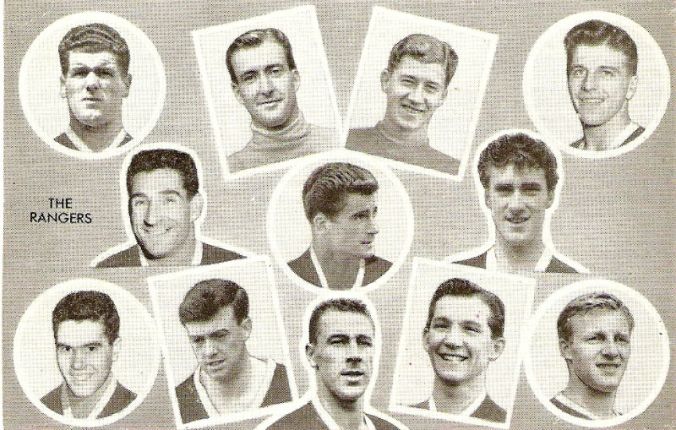
FRENCH OPPONENTS
Nice – or Olympique Gymnaste Club de Nice Cote d’Azur to give them their full title – were in the midst of the most successful spell in their history when they were drawn against Rangers. Their 1956 league victory was the third of four achieved in that decade, along with two French Cup wins. It was certainly a golden era for their followers – since 1959 the club has won nothing, apart from a solitary cup final secured in a penalty shoot-out against Guingamp in 1997.
Having comfortably disposed of Danish champions Aarhus 6-2 over two legs in the preliminary round of the 1956/57 European Cup, it was a bewildered and bedraggled-looking bunch of Frenchmen who arrived for a training session at Ibrox on the eve of the first round proper. International travel was still in its infancy in the 1950s and Nice were beset with problems as they tried to get to Scotland. The players were grounded by fog in Paris, finally touching down in London at 7.15pm, four hours after they should have been in Glasgow. The party was then informed there were no seats available on any flights north that night, while accommodation in the capital was impossible to find because the Motor Show was taking place. The only option was to take the 10.15 night train from King’s Cross to Dundee, changing at Edinburgh at 6am before catching another train across to Glasgow.
It was hardly the ideal preparation for a top-class football match, but Nice manager Lucien Lapayre seemed relaxed. As his players, resplendent in black and red club tracksuits, posed for photos on the platform at King’s Cross, he declared, ‘I think there will be only one goal between us when we meet. Naturally I hope that we will have the one extra goal’.
His confidence seemed well placed as the Frenchmen held a training session the next day, only a few hours after their gruelling trip. After a short period of exercise, the players turned to ball practice, putting on a 90-minute exhibition of passing, dribbling and body swerving that left observers as breathless as the players. It was an eye-opener for the watching Scots, who had never seen anything like it before, and they were suitably impressed. Yet the prevailing opinion among the pundits was that, while the Nice players would be clever with the ball and would possess all the usual Continental artistry, Rangers should prove too strong in the end.

THE FIRST LEG
On a torrid night of rain and hailstones, 65,000 brave souls turned out to witness the first foray by Rangers into European football, and, according to the Glasgow Herald, were treated to ‘a disgraceful exhibition of fouling and other misbehaviour’. English referee Arthur Ellis, one of the top officials in the game at the time, was at the centre of much of the drama as the game descended into chaos
With Argentinians and Spaniards in the Nice team as well as Frenchmen, Ellis struggled to cope with the language barriers as well as the roughhouse tactics. Nice were seemingly guilty of persistent fouling, pushing, elbowing, obstruction and dissent, with defenders Nani and Gonzalez, the prime offenders. Rangers were by no means innocent, a clash shortly after the start of the match between Bobby Shearer and Nurenberg setting the tone for the game, and Logie and Baird were lucky not to be sent off, according to newspaper reports.
When football sporadically broke out between the hostilities, the French, as predicted, adopted a rhythmic passing game, which initially had little impact. Rangers dominated the opening quarter of the game, and went close with a powerful 20-yard shot from Baird that was saved by Colonna. However the French opened the scoring in the 23rd minute with a solo effort from the outside-left Faivre and took a grip of the game. Five minutes before half time, though, Max Murray scored Rangers’ first ever goal in European football, equalising after taking a pass from Baird. Rangers could have gone in ahead at the interval had Colonna not been able to pull off a good save from a free-kick
Shortly after half-time, as the game threatened to descend into a free-for-all, an increasingly vexed Ellis called a conference of the two teams on the pitch and warned Nice in particular that he would ‘stand no more nonsense’. The message, relayed through a hurriedly summoned interpreter, seemed to do the trick and proceedings resumed, albeit in a more tense atmosphere. Rangers were well in control and could have scored at least three more goals in the second half, but had to make do with a Billy Simpson header after 61 minutes following a Murray cross.
The scoring may have been over but the drama was not, with the match ending in shambolic scenes as the referee inexplicably blew for full-time five minutes early. The players and officials disappeared from view, leaving the crowd bemused and less than happy. When the mistake was eventually discovered the players had to be recalled to the pitch – with Eric Caldow having to be retrieved from the bath.
The Rangers full back was first in the water as he had an important engagement the following day. He told me a few years ago, ‘I was in a rush to get away for my brother’s wedding in Cumnock where I was to be best man. The whistle was blown and naturally when the whistle goes you get off as quick as you can. – but the man had made a mistake.’
After the match, Ellis, who later famously officiated in the TV series It’s A Knockout, offered no explanation for his actions, but suggested a theory for the bad behaviour of the Nice players. He declared, ‘I feel that one of the reasons for the French team indulging in the tackling they did was the high bonus they were on to make sure of victory. If the figures I hear are paid as bonuses in Continental club football games are correct, it is not to be wondered at, that so many of their matches are played out on a basis of victory at any price’
 While the Scottish papers laid the blame for the trouble on the pitch squarely at Nice’s door, unsurprisingly their French press counterparts didn’t see it quite the same way, with one Nice-based journal chastising Ellis for tolerating the ‘far too hard’ play of the Scots.
While the Scottish papers laid the blame for the trouble on the pitch squarely at Nice’s door, unsurprisingly their French press counterparts didn’t see it quite the same way, with one Nice-based journal chastising Ellis for tolerating the ‘far too hard’ play of the Scots.
The indiscipline of European teams was a surprise to the Scots players, particularly some of the off-the-ball antics. Caldow recalled, ‘We saw a lot of that, especially after a few years in Europe. It was just stupidity on the players’ part. But the referees weren’t as bright in Europe as they were over here either, and that’s how they seemed to get away with it.’
Fellow defender Harold Davis was convinced that the match officials contributed to some of the on-field trouble that seemed to occur in almost every game in the early days. ‘The reason there were so many punch-ups and so much bad feeling, was the referees,’ he told me. ‘In those days, 90 per cent of the referees were homers, and I suppose you can understand why. There were crowds of eighty, ninety or one hundred thousand and they were all standing, and were pretty volatile. Most referees in those days tended to go the home way and that led to bad feeling.’

RAINED OFF
The second leg was due to take place on November 1 and Rangers flew in to the Cote D’Azure in high spirits. During the BEA flight the captain came through from the cockpit to chat with the players, and was met with some mild ribbing about the fact that Rangers had been given an Elizabethan class airliner, rather than the more luxurious Viscount.
The captain’s good-humoured response was that the Elizabethan was an easier plane to fly. Just over a year later, the very same plane that had taken Rangers to Nice, crashed trying to take-off in snowy conditions at Munich Airport, killing eight members of the Manchester United team, who were on their way back from a European Cup game in Belgrade.
The Scottish party touched down in France expecting sunshine and warm temperatures. Instead, they were met with a deluge of rain, and, as they relaxed at L’Hotel Cavallero before spending a quiet night at the cinema watching a rock ‘n’ roll film, the incessant downpour was making sure that the game would be postponed the next morning and delayed for a fortnight.

THE SECOND LEG
Two weeks later, Rangers returned to the south of France, for the re-arranged fixture. After the fireworks of the first leg, it was always likely that the return match at the Leo Lagrange stadium would be a fiery affair, and so it proved. In front of a small but tempestuous crowd of 8,439 there was little evidence of the famed Auld Alliance between Scotland and France.
The afternoon match was described as “90 minutes of insane animation” by the French daily newspaper Le Patriote and it seems as good a way to describe the events as any. On a waterlogged pitch, Rangers took the lead from the penalty spot in the 40th minute through the ever-dependable Johnny Hubbard. The award, given after Murray was fouled by Martinez, sparked vociferous protests from the Nice players, several of whom were lucky not to be booked.

Five minutes later, though, the French players had plenty reason to be thankful to the Italian referee, as he ruled out what initially appeared to be a perfectly legitimate Rangers goal, and almost certainly denied the Scots victory in the match. Hubbard and Murray combined again as the winger’s corner was headed home by the Rangers centre forward. But the celebrations were short-lived as Pieri made it known he had already blown for half time as Murray met the ball with his head.
Encouraged by this lucky escape, in the second half, Nice gained the upper hand, with Rangers goalkeeper George Niven performing heroics to keep out the French team’s forwards, particularly the skilful Hungarian Ujlaki. However, Nice eventually managed to find a way through and scored twice inside three minutes to gain the advantage in the match, and draw level on aggregate.
Ian McColl was outstanding in defence as Nice bombarded the Rangers goal in the late period of the match and his efforts combined with Niven’s agility prevented Rangers going further behind.
Then, with just six minutes remaining, all hell broke loose. With Nice going for a late winner the atmosphere in the ground was electric, and the crowd erupted when young Gers left-half Billy Logie collided with Muro. The Frenchman limped away from the challenge, screaming in apparent agony, but not in so much pain that he could not aim a sly blow at Logie. His teammate Bravo then entered the fray, punching the Scot square in the face. Unsurprisingly Logie attempted to retaliate but the pair were dragged apart, before the referee stepped in to order off Logie and Bravo. Pieri’s decision was met with howls of derision from the terraces and inevitable protests from the players, but despite the efforts to make him change his mind, he was adamant that both players would play no further part.
As Logie disappeared to the changing rooms, Bravo refused to depart the arena, huffily throwing a raincoat over his shoulders and sitting on the bench for the last few minutes of the match. As the game re-started trouble flared among the French fans behind the Rangers goal and armed police had to step in to prevent a pitch invasion. On the final whistle, nine gendarmes escorted Pieri to the dressing room, protecting him from the increasingly hysterical crowd. A further 50 armed officers had to be drafted in to prevent the more hotheaded fans from scaling the wire fencing to get to the Italian. Later he had to be smuggled out of the stadium through a side-door.
 Nowadays, had a referee been treated to such hostility, a heavy fine or ban would almost certainly result for the home club, but Signor Pieri was in a forgiving mood, despite his obvious fright. He said afterwards, ‘I am convinced I only did my duty in ordering off both men. The football field is not the place for fighting. I admit I was alarmed, but I am certain after the excitement has died down, the same people who wanted my blood will be in agreement with the action I took.’
Nowadays, had a referee been treated to such hostility, a heavy fine or ban would almost certainly result for the home club, but Signor Pieri was in a forgiving mood, despite his obvious fright. He said afterwards, ‘I am convinced I only did my duty in ordering off both men. The football field is not the place for fighting. I admit I was alarmed, but I am certain after the excitement has died down, the same people who wanted my blood will be in agreement with the action I took.’
Rangers manager Scot Symon felt the decision was tough on Logie. But he went on, ‘He is an inexperienced youngster and it was perhaps only natural that he should try to retaliate.’ Director John Lawrence declared sharply, ‘And we look upon the French as allies…’
THE PLAY-OFF
In the days before extra time and penalty shoot-outs, the 3-3 aggregate draw meant a ply-off. And so to Paris, for a third attempt to settle the tie at the famous Parc des Princes, home of French rugby. It was another night of drama, marred by trouble on and off the field. Rangers suffered a major injury blow on the morning of the match when veteran captain and centre-half George Young pulled up during a late fitness test.
Harold Davis was called in as a late replacement, and while he could certainly not be blamed for Rangers’ eventual 3-1 defeat, Young’s dominating presence was sorely missed. Davis always remembered his European debut. ‘I was just a boy and getting thrown in to that, especially on foreign soil, was quite an experience. We had a hard time of it in that game.’
In truth, the skilful French, who took the lead through Foix, shortly before half time, outplayed Rangers on the night. Nice then conceded an own goal, which briefly gave the Scots hope, before the French sealed it, scoring twice in the closing stages of the game to book their place in the second round with a 3-1 victory.
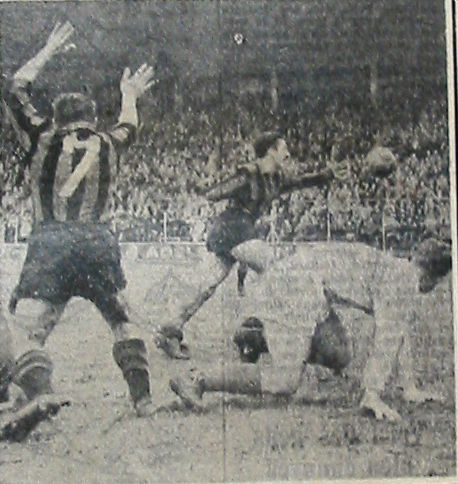
The drama was not quite over though. With 10 minutes to go, and the game all but lost for the Scottish champions, Rangers right back Bobby Shearer went in hard on the French inside left Muro. His tackle sent his opponent sprawling onto the track, and Muro was briefly knocked unconscious. Nice coach Carniglia raced onto the pitch and made to attack Shearer who was pulled away by captain for the night Ian McColl. A bemused McColl was then booked, as some of the incensed crowd of 12,000 invaded the park. Muro was stretchered off but recovered minutes after being taken to the dressing room and suffered only mild concussion.
ENTENTE CORDIALE
For all that had gone before, somewhat surprisingly, the opposing teams were best of friends after the match. Players and officials from both sides joined together in a Paris hotel for a dinner party at which the Rangers group gave their unreserved congratulations to the Nice team.
But there was no doubt that everyone at the club was sorely disappointed at the outcome. It was widely felt that Rangers did not have the guile or the craft to exploit potential weaknesses in the opposing team and that a solid defence would not be enough to progress along with the elite of the continent. The failure to take advantage of good scoring chances was a problem that Rangers would encounter time-and-time again in Europe.
 Eric Caldow, who at one point held the British record for the number of appearances in Europe, believed the Scottish payers felt they had a point to prove. He said: ‘We heard a lot of stories about the teams in Europe, that they were supposed to be better than the British players, but it was good to play against them. That first game against Nice was a really big game for us and it was an honour to be part of the first Rangers team to play in the European Cup. In those days, every team had wingers, including in Europe, so as a full back I had a job to do and that was to look after my winger. There was none of the constant passing back that you get nowadays, especially in Europe. We had ten attackers and ten defenders – it was more entertaining in my opinion. You get some games now that the goalkeeper doesn’t make a save for the whole game.’
Eric Caldow, who at one point held the British record for the number of appearances in Europe, believed the Scottish payers felt they had a point to prove. He said: ‘We heard a lot of stories about the teams in Europe, that they were supposed to be better than the British players, but it was good to play against them. That first game against Nice was a really big game for us and it was an honour to be part of the first Rangers team to play in the European Cup. In those days, every team had wingers, including in Europe, so as a full back I had a job to do and that was to look after my winger. There was none of the constant passing back that you get nowadays, especially in Europe. We had ten attackers and ten defenders – it was more entertaining in my opinion. You get some games now that the goalkeeper doesn’t make a save for the whole game.’
Scot Symon had his own concerns about the new challenge of European football. Although Rangers went out in the first round, the team had to make three trips to France and took part in three highly physical matches. Symon was particularly worried about the effects of travelling and the strain of rough play by opponents on his players.
However, the Rangers players had enjoyed their experience, despite the defeat, and were looking forward to pitting their skills against continental opponents again.
• Adapted from Follow On: 50 Years Of Rangers In Europe (2006)

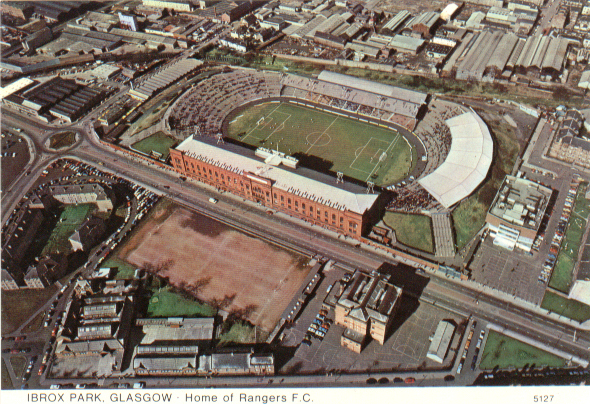
 The opening of the new grandstand was an understandably proud moment for a club whose very existence had been in doubt less than a quarter of a century before. The 1902 Ibrox Disaster, when 25 fans died and hundreds were injured after a wooden terracing collapsed, had a devastating impact on the club’s good name as well as its finances.
The opening of the new grandstand was an understandably proud moment for a club whose very existence had been in doubt less than a quarter of a century before. The 1902 Ibrox Disaster, when 25 fans died and hundreds were injured after a wooden terracing collapsed, had a devastating impact on the club’s good name as well as its finances.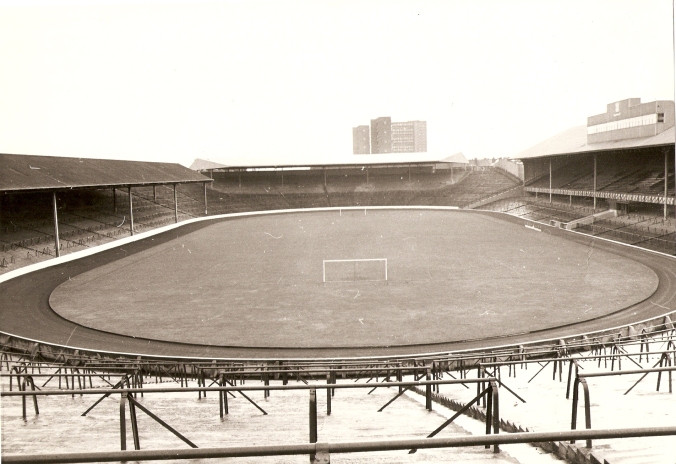 In the early days, sporting achievement at Ibrox was by no means limited to football. By the start of the 20th Century, Rangers’ own athletics meeting was established as one of the most prestigious events on the sporting calendar and it remained so until the 1960s. The city’s athletics clubs also staged regular meetings at Ibrox, and it was one such event, hosted by West of Scotland Harriers in November 1904, that produced one of the greatest ever performances in the history of British athletics, when English runner Alf Shrubb beat seven world records in one afternoon. Another non-football highlight came when boxer Jim Watt retained his world lightweight title on the Ibrox pitch in 1980.
In the early days, sporting achievement at Ibrox was by no means limited to football. By the start of the 20th Century, Rangers’ own athletics meeting was established as one of the most prestigious events on the sporting calendar and it remained so until the 1960s. The city’s athletics clubs also staged regular meetings at Ibrox, and it was one such event, hosted by West of Scotland Harriers in November 1904, that produced one of the greatest ever performances in the history of British athletics, when English runner Alf Shrubb beat seven world records in one afternoon. Another non-football highlight came when boxer Jim Watt retained his world lightweight title on the Ibrox pitch in 1980.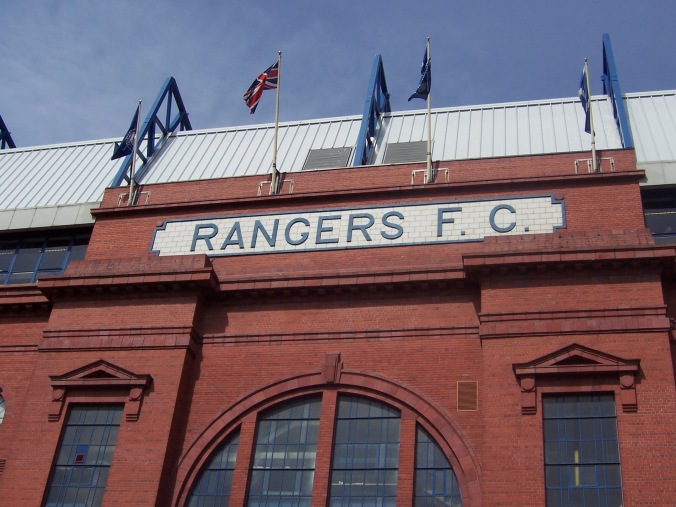 The new 7,500 capacity Copland stand made its debut in the opening home game of the 1979/80 season against Celtic. It was soon joined by the identical Broomloan stand at the opposite end and their bigger brother, the Govan Stand. Ibrox was now the most modern football stadium in the UK – all Rangers needed was a team worthy of the ground.
The new 7,500 capacity Copland stand made its debut in the opening home game of the 1979/80 season against Celtic. It was soon joined by the identical Broomloan stand at the opposite end and their bigger brother, the Govan Stand. Ibrox was now the most modern football stadium in the UK – all Rangers needed was a team worthy of the ground.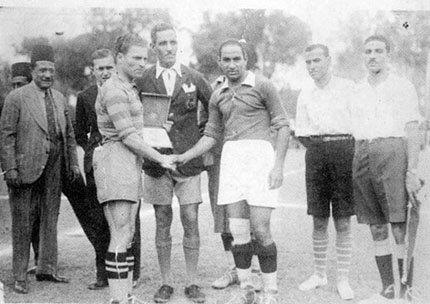


 “Toffee Bob” was a prolific goalscorer, superb dribbler and exquisite passer and is considered one of Scotland’s greatest ever players. He scored three hat-tricks for the national team and his treble against England in 1900 is part of Scottish footballing folklore. He also enjoyed a successful domestic career at Rangers, Queen’s Park and Newcastle United.
“Toffee Bob” was a prolific goalscorer, superb dribbler and exquisite passer and is considered one of Scotland’s greatest ever players. He scored three hat-tricks for the national team and his treble against England in 1900 is part of Scottish footballing folklore. He also enjoyed a successful domestic career at Rangers, Queen’s Park and Newcastle United. Glasgow-born Bob had joined Queen’s Park as a 17-year-old and it was while he was with the amateurs that he made his name. His first international appearance was as a teenager against Wales in 1896 and he scored his first two goals a week later against Ireland. He hit the target in his next four games – including hat-tricks against Wales and Ireland in consecutive weeks.
Glasgow-born Bob had joined Queen’s Park as a 17-year-old and it was while he was with the amateurs that he made his name. His first international appearance was as a teenager against Wales in 1896 and he scored his first two goals a week later against Ireland. He hit the target in his next four games – including hat-tricks against Wales and Ireland in consecutive weeks.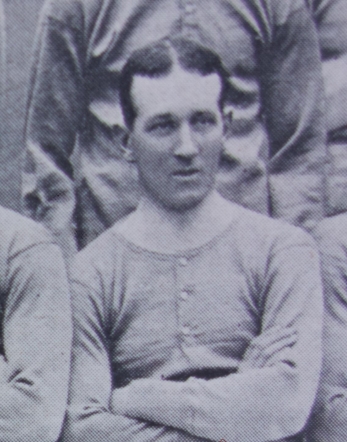


 Of the regular cast, only Ian McShane was actually allowed to go abroad – the rest of the team was stuck back in Britain as he swanned around Venice, sipping espressos and admiring the art and architecture. His real-life wife, who had a part in this episode, did get to travel, funnily enough, as did a host of other actors, including Haydn Gwynne (of Drop The Dead Donkey fame), Fulton Mackay (Mr Mackay in Porridge) and Steven Pacey (best known for his role in Blake’s 7).
Of the regular cast, only Ian McShane was actually allowed to go abroad – the rest of the team was stuck back in Britain as he swanned around Venice, sipping espressos and admiring the art and architecture. His real-life wife, who had a part in this episode, did get to travel, funnily enough, as did a host of other actors, including Haydn Gwynne (of Drop The Dead Donkey fame), Fulton Mackay (Mr Mackay in Porridge) and Steven Pacey (best known for his role in Blake’s 7). Incidentally, in a further incredible coincidence, the very first episode of the series was broadcast in the UK on my 14th birthday. Spooky, eh?
Incidentally, in a further incredible coincidence, the very first episode of the series was broadcast in the UK on my 14th birthday. Spooky, eh?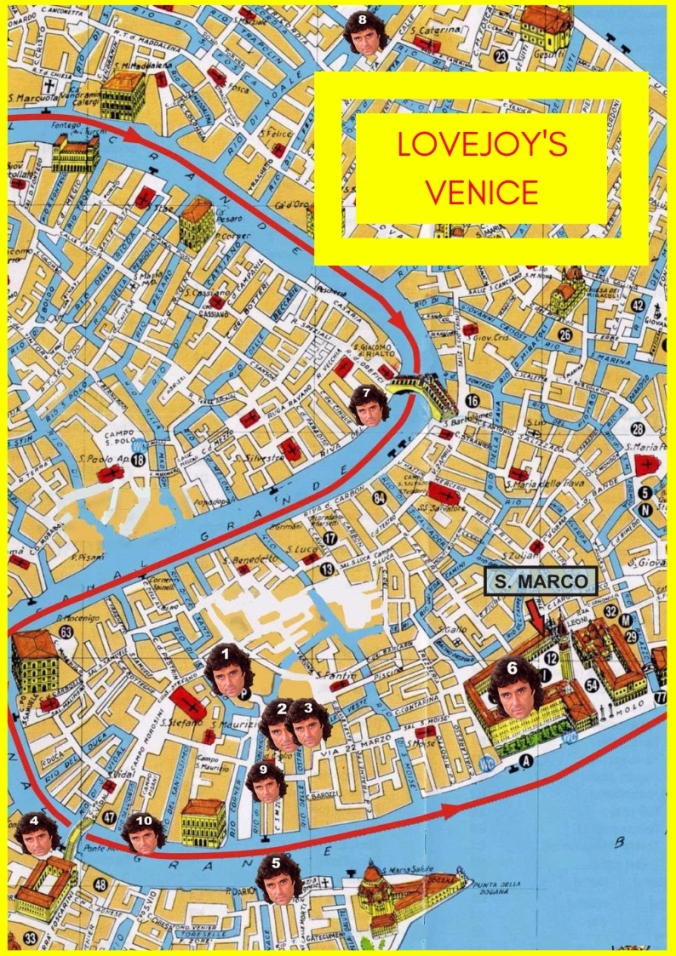



















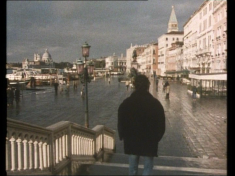 His tour takes him down the Grand Canal and past the Palazzo Salviati – which instantly rings a bell. The building, striking for its mosaic-adorned façade, was built as a shop for the Salviati glassmaking family, producers of Murano ornaments. During World War II the building was taken over by the Nazis who used it as their headquarters. More importantly, from the programme’s point of view, it revealed the location of Pinder’s Venetian palace. During their chat at his Suffolk mansion, Pinder had told Lovejoy that from the Malcontento he had watched “wretched tourists parading in and out of Salviati’s next door”. So now Lovejoy knew where Pinder lived.
His tour takes him down the Grand Canal and past the Palazzo Salviati – which instantly rings a bell. The building, striking for its mosaic-adorned façade, was built as a shop for the Salviati glassmaking family, producers of Murano ornaments. During World War II the building was taken over by the Nazis who used it as their headquarters. More importantly, from the programme’s point of view, it revealed the location of Pinder’s Venetian palace. During their chat at his Suffolk mansion, Pinder had told Lovejoy that from the Malcontento he had watched “wretched tourists parading in and out of Salviati’s next door”. So now Lovejoy knew where Pinder lived.































 But if the 23-year-old’s arrival on these shores was low-key, his impact on the pitch was quite the opposite. Hansen was the Brian Laudrup of his day – a skillful, pacy, forward with a habit of scoring spectacular goals. His career in Scotland may have been cut short by injury but in his three years at Ibrox, the “Great Little Dane” became a firm fans’ favourite.
But if the 23-year-old’s arrival on these shores was low-key, his impact on the pitch was quite the opposite. Hansen was the Brian Laudrup of his day – a skillful, pacy, forward with a habit of scoring spectacular goals. His career in Scotland may have been cut short by injury but in his three years at Ibrox, the “Great Little Dane” became a firm fans’ favourite.
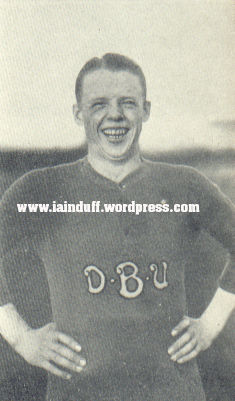
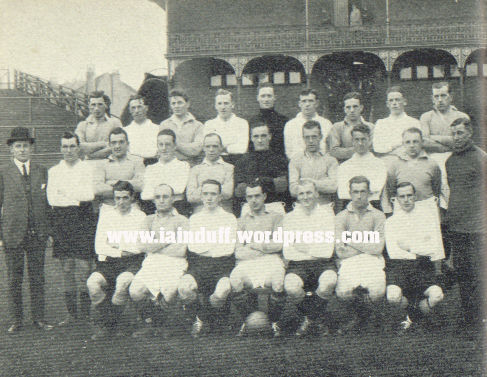
 able shot past the on-rushing Celtic goalkeeper Charlie Shaw into the corner of the net. The Daily Record match report described it as “a brilliant goal” and it helped Rangers to a 2-0 win, a key victory in their eventual championship win.
able shot past the on-rushing Celtic goalkeeper Charlie Shaw into the corner of the net. The Daily Record match report described it as “a brilliant goal” and it helped Rangers to a 2-0 win, a key victory in their eventual championship win.
 the worst imaginable, I had now become their best friend – yes, I was downright a hero in their eyes.” He was followed to the railway station by a crowd of several hundred fans who chatted with him and touched him as he walked “possibly to ascertain whether I really was also of flesh and blood.” His impression was that Scots believed if you could play football you were all right, even if you were a foreigner.
the worst imaginable, I had now become their best friend – yes, I was downright a hero in their eyes.” He was followed to the railway station by a crowd of several hundred fans who chatted with him and touched him as he walked “possibly to ascertain whether I really was also of flesh and blood.” His impression was that Scots believed if you could play football you were all right, even if you were a foreigner.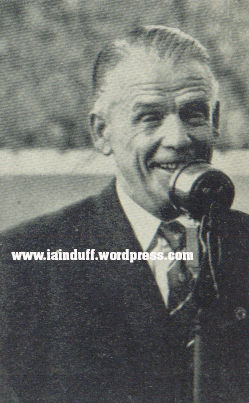
 I did, though, start a blog to document my “
I did, though, start a blog to document my “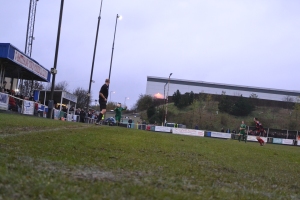
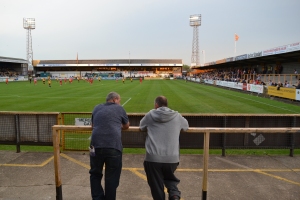
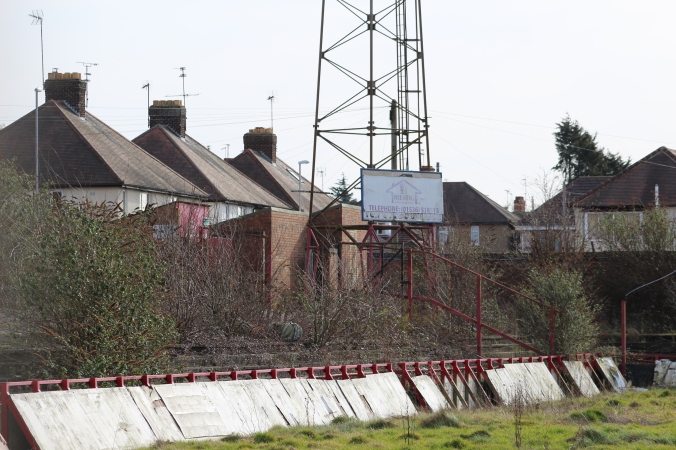 On a door on the main stand at Kettering Town’s old Rockingham Road ground, someone has daubed the words “KTFC WILL NEVER DIE.” It might be a trite slogan, but it’s almost certainly true. No matter how badly they’re treated by the people entrusted with their well-being, football clubs generally don’t die. If a club really matters to the community it belongs to then the chances are it will survive, even if it is in a much-diminished form. Kettering are living proof – but only just.
On a door on the main stand at Kettering Town’s old Rockingham Road ground, someone has daubed the words “KTFC WILL NEVER DIE.” It might be a trite slogan, but it’s almost certainly true. No matter how badly they’re treated by the people entrusted with their well-being, football clubs generally don’t die. If a club really matters to the community it belongs to then the chances are it will survive, even if it is in a much-diminished form. Kettering are living proof – but only just.
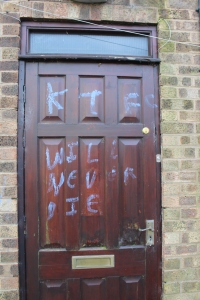 A decade ago, the Poppies found themselves in the unlikely position of being at the centre of the football world. In October 2005, the non-league club’s new owner Imran Ladaak revealed that Paul Gascoigne, the most famous and most talented footballer of his generation, was the new manager. It was an announcement that took absolutely everyone by surprise, possibly including Gazza himself. His role was to coach the part-time Conference North club, to the upper echelons of English football and at the same time bring the crowds into Rockingham Road. Anyone who knew anything about Gascoigne should have known that the former was never going to happen but he certainly achieved the latter, albeit briefly.
A decade ago, the Poppies found themselves in the unlikely position of being at the centre of the football world. In October 2005, the non-league club’s new owner Imran Ladaak revealed that Paul Gascoigne, the most famous and most talented footballer of his generation, was the new manager. It was an announcement that took absolutely everyone by surprise, possibly including Gazza himself. His role was to coach the part-time Conference North club, to the upper echelons of English football and at the same time bring the crowds into Rockingham Road. Anyone who knew anything about Gascoigne should have known that the former was never going to happen but he certainly achieved the latter, albeit briefly.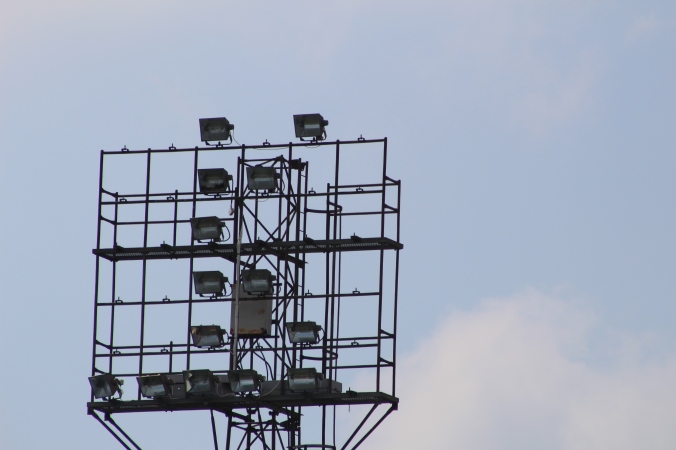 Stalwarts of the non-league scene, Kettering had enjoyed moments in the spotlight before. In the mid 70s they were the first English club to have a sponsor’s name on their shirts when chief executive Derek Dougan signed a four-figure deal with a local tyre company. The move caused predictable uproar at the FA and the club was threatened with a fine if they didn’t remove the advertising. Another slightly more bizarre claim to fame is that they were apparently the first – and, for all I know, the only – club to have their initials spelled out in their floodlights.
Stalwarts of the non-league scene, Kettering had enjoyed moments in the spotlight before. In the mid 70s they were the first English club to have a sponsor’s name on their shirts when chief executive Derek Dougan signed a four-figure deal with a local tyre company. The move caused predictable uproar at the FA and the club was threatened with a fine if they didn’t remove the advertising. Another slightly more bizarre claim to fame is that they were apparently the first – and, for all I know, the only – club to have their initials spelled out in their floodlights.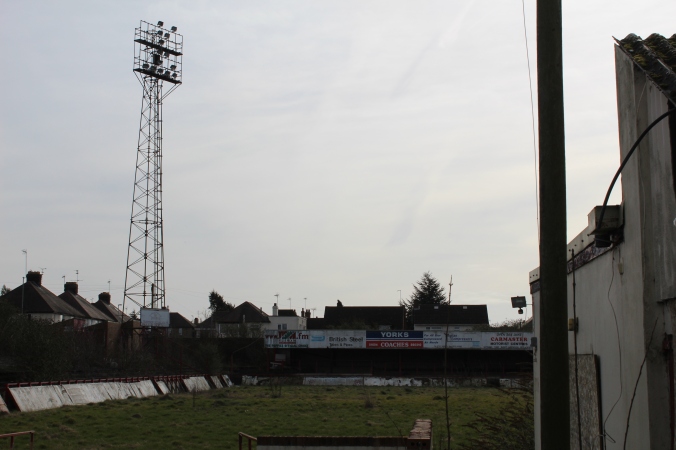
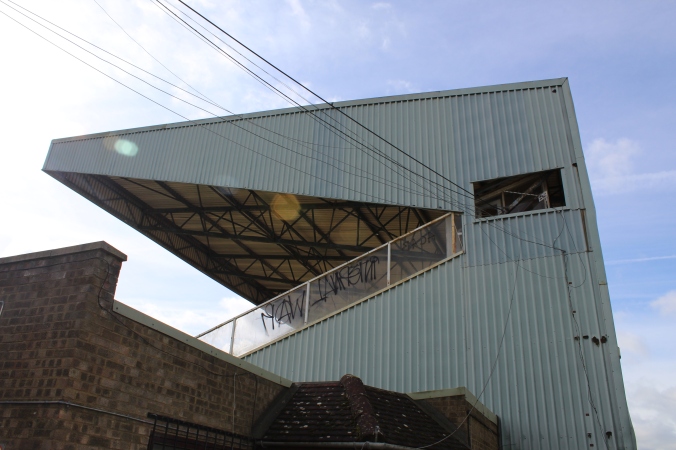 Those floodlights still stand today, looming over the crumbling stadium that had been Kettering’s home since 1897. In August 2011, with the lease on Rockingham Road – or the Elgood’s Brewery Arena as it was officially known – coming to an end and a long-term agreement apparently not forthcoming, the owners made the ill-fated decision to move out. The team took up residence at the former home of Rushden and Diamonds, Nene Park, and a few months later Rockingham Road was repossessed by bailiffs. It has lain empty ever since, gradually falling apart and slowly being reclaimed by nature. The land has been put up for sale and is expected to be purchased by housing developers.
Those floodlights still stand today, looming over the crumbling stadium that had been Kettering’s home since 1897. In August 2011, with the lease on Rockingham Road – or the Elgood’s Brewery Arena as it was officially known – coming to an end and a long-term agreement apparently not forthcoming, the owners made the ill-fated decision to move out. The team took up residence at the former home of Rushden and Diamonds, Nene Park, and a few months later Rockingham Road was repossessed by bailiffs. It has lain empty ever since, gradually falling apart and slowly being reclaimed by nature. The land has been put up for sale and is expected to be purchased by housing developers.

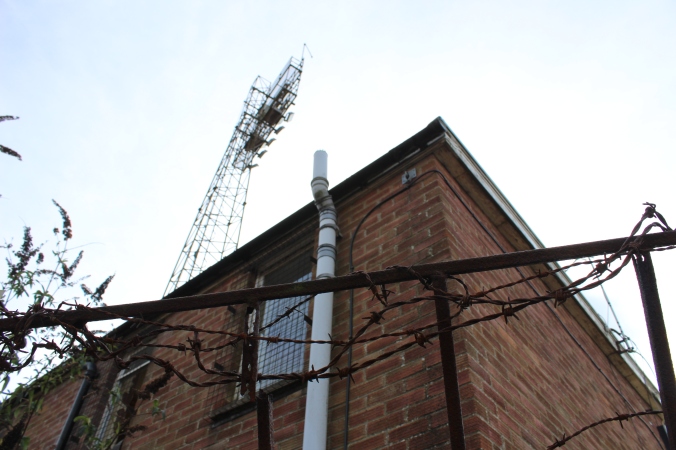

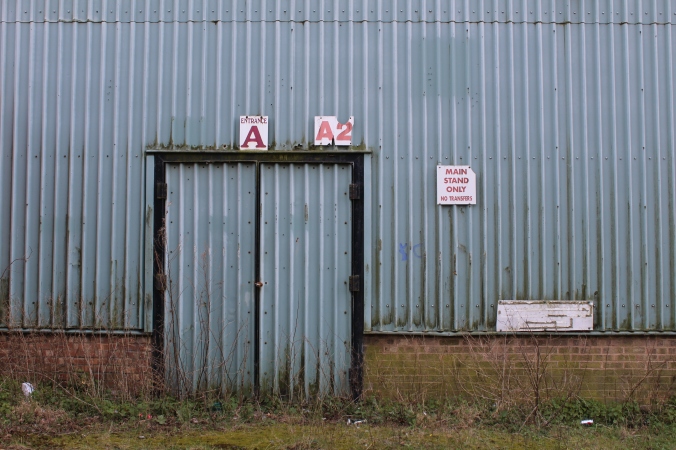


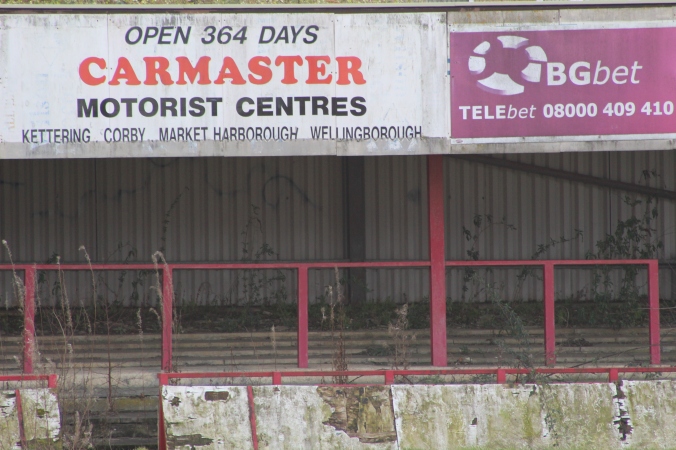
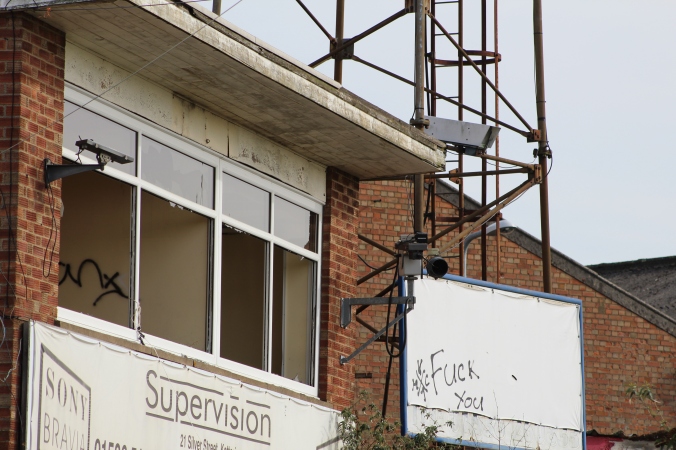
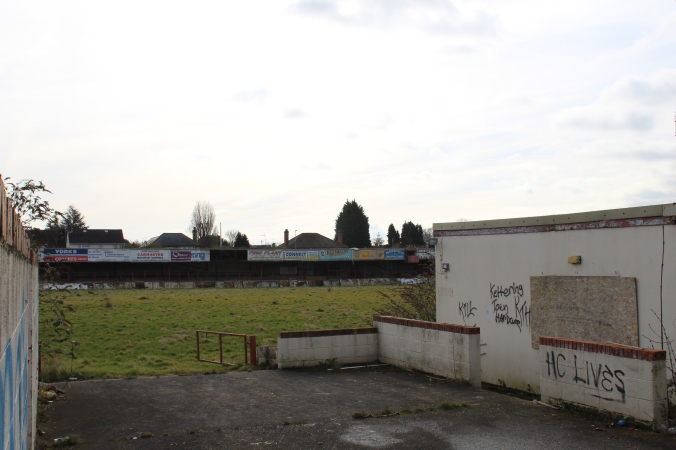

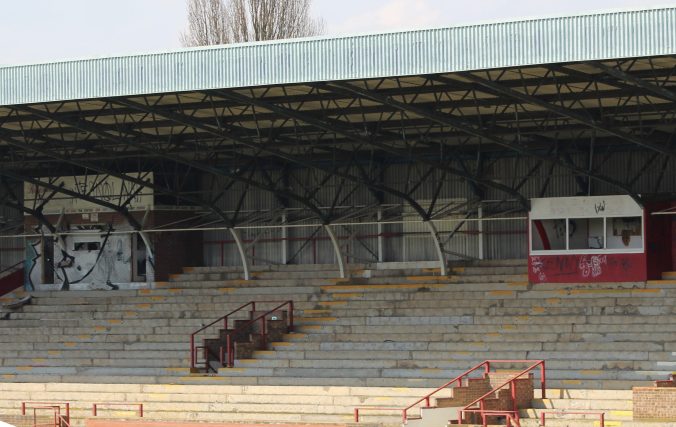
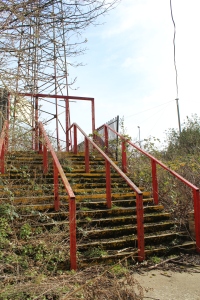
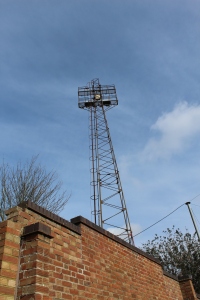
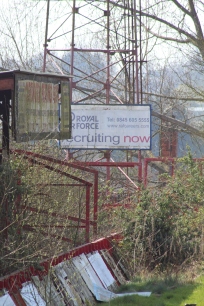
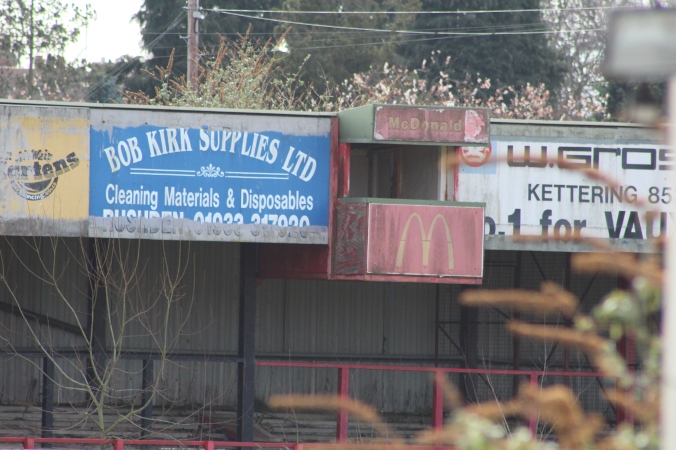
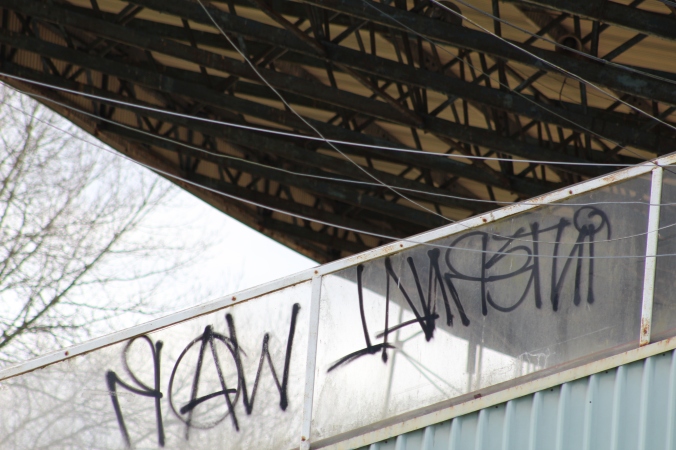 In October 2012, a humiliating 7-0 defeat in a game in which they could only field 10 players seemed to signal the end. With Nene Park no longer available, and a lack of registered players meaning they were unable to field a team, several games were postponed until a temporary home at Corby was found. Now at long last, with a team of volunteers led by club chairman Ritchie Jeune now at the helm, there are signs of stability.
In October 2012, a humiliating 7-0 defeat in a game in which they could only field 10 players seemed to signal the end. With Nene Park no longer available, and a lack of registered players meaning they were unable to field a team, several games were postponed until a temporary home at Corby was found. Now at long last, with a team of volunteers led by club chairman Ritchie Jeune now at the helm, there are signs of stability.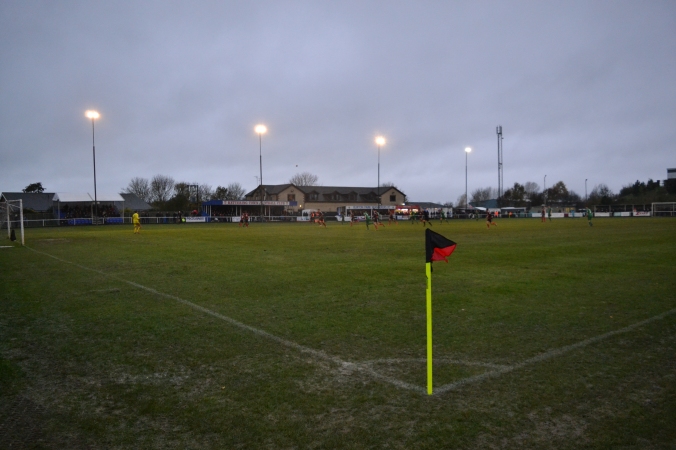
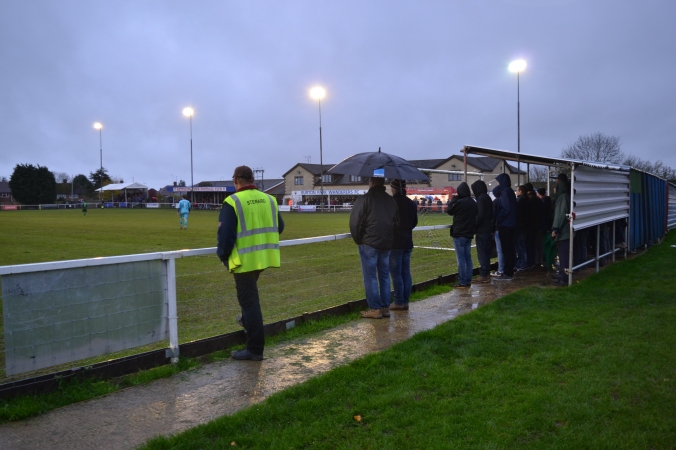
 The Poppies are currently in the Premier Division of the Southern League and going for promotion. They play a few miles outside Kettering at Latimer Park, ground sharing with Burton Park Wanderers of the United Counties League. It’s been a nightmare few years for Kettering but a move back to their spiritual home at Rockingham Road remains the dream.
The Poppies are currently in the Premier Division of the Southern League and going for promotion. They play a few miles outside Kettering at Latimer Park, ground sharing with Burton Park Wanderers of the United Counties League. It’s been a nightmare few years for Kettering but a move back to their spiritual home at Rockingham Road remains the dream.
